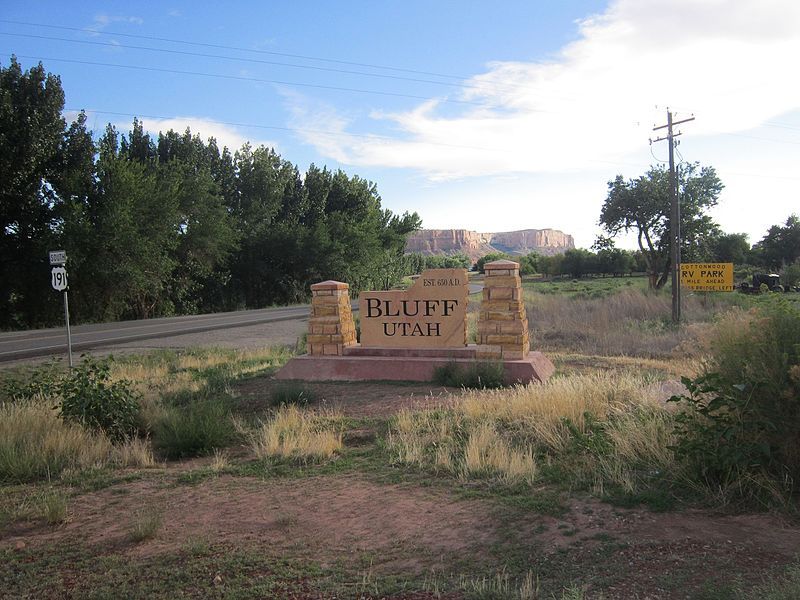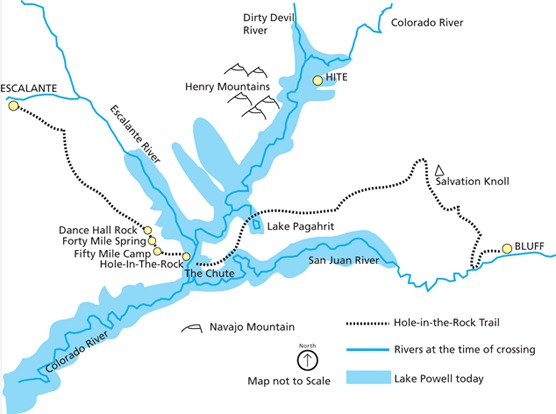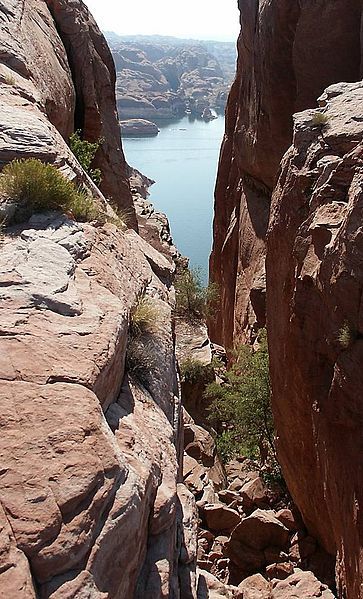Resiliency in Historic Bluff Utah
An analysis of the history of Bluff, Utah, including the Hole-in-the-Rock expedition, the settlement of Bluff, and Bluff in the 20th century.

The history of Bluff, Utah provides a case study in resiliency.
The white pioneer settlers who trekked to Bluff Utah in 1880 overcame tremendous challenges to simply arrive at their intended destination. The voyage across the state from Salt Lake City was a long and arduous one. Josephine "Aunt Jody" Woods lamented, "The life was frightened right out of us all. I don't know what they call this place but I call it the Devil's Twist & that is a Sunday name for it. For of all the roads on earth, I don't think there is any worse than they are [here]. It is no earthly use for me to try to describe the road or the county. It is the most god forsaken & wild [looking] country that was ever traveled." One stage in the journey required the blasting of a large hole cliffside rocks, and lowering wagons down the steep decline to the Colorado River - a site known as "Hole in the Rock." Despite the difficulties, the journey was made without a single loss of life.
Once they reached the site they would call Bluff, the pioneers had many difficulties that included facing the environment and the Native Americans that were there. The river had to be tamed, resources gathered, and buildings constructed. All of these proved difficult, but possible for the pioneers. Irrigation needed to be erected to create land suitable for farming, but was repeatedly washed away when the floods rose. The early settlers lived in constant fear of the river. "I remember about the river. We used to be so deathly afraid of that river because at that time we had so much flooding. We were scared to death the town was going to be washed away. It just started cutting in so bad that it was almost up to the houses," recalled Nadine Adams.
They were also in constant fear of the Native peoples of the region. Concerning Native theft of livestock, Albert Lyman related, "Eleven of the horses had been stolen from Bluff, and two of them had been gone a year. When the Indians saw the intention of the white men to claim these horses, they sent up a yell, and guns flashed quickly into sight."
The resilient residents continued to face difficulty into the 20th century as their economy faced various boom-bust cycles because of shifts between agriculture, livestock, and mining. Eventually the town's population settled around 300 individuals. The journal entries of these people demonstrate both the trials they faced and their resilient nature in overcoming them.
Images


